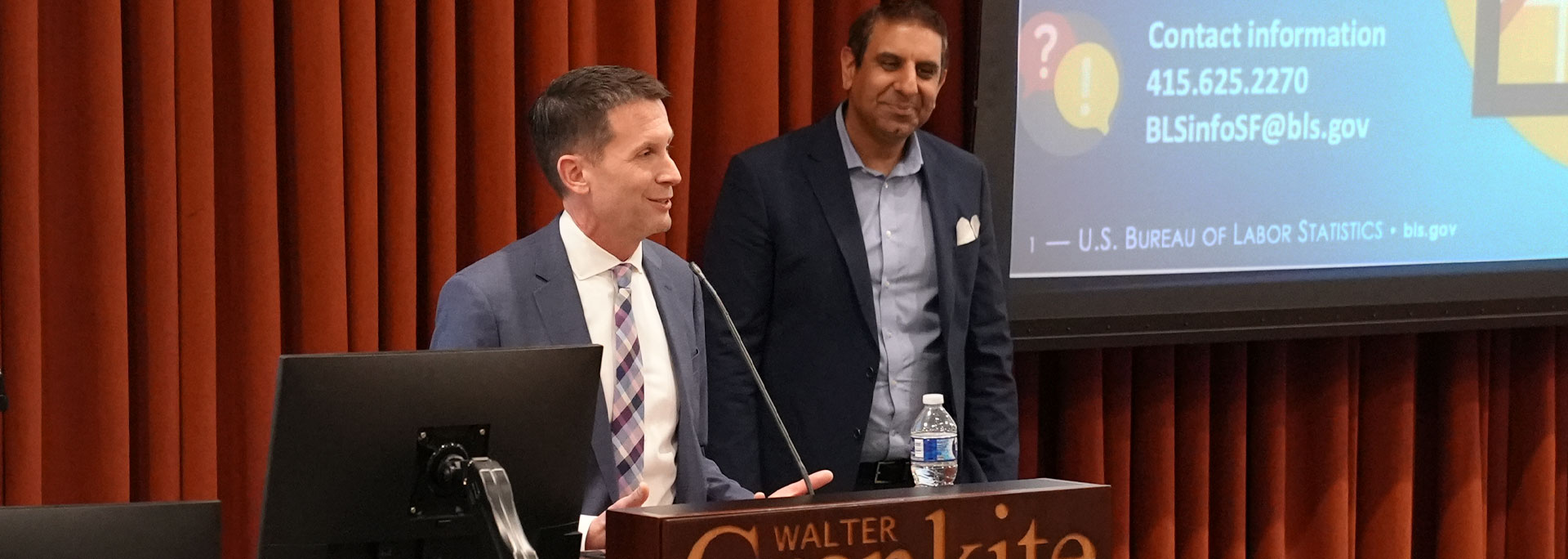It’s no idle boast when U.S. Bureau of Labor Statistics (BLS) senior economist Amar Mann says “We have a stat for that.”
The BLS tracks data from imports and exports, to median incomes, employment, industry trends, inflation, and more. And unlike many government statistical bureaus abroad, the BLS is insulated from political interference and tries to make its data as user-friendly as possible.
“We want it visible to all people using this information,” Mann said. “This information is helping to support good decision-making by businesses, individuals, career seekers, college students and the members of Congress.” The point, Mann adds, is that the data collection process affects how people make decisions about their lives, including home buying, job searching, and future and business planning.
BLS data is an especially valuable resource for journalists, not least because the BLS understands what makes journalists tick.
Chris Rosenlund, the West’s assistant regional commissioner for the BLS, notes the similarities between the work done at the Bureau and journalism.
“I’ve just been thinking about the mission of the Bureau of Labor Statistics and what we do, and it is to provide impartial, objective, accurate, timely information about what’s going on,” Rosenlund said. “That overlaps with what [journalists are] pursuing professionally as well, which is to also share objective, accurate information about what’s going on throughout the world.”
Rosenlund and Mann made the comments at a March 30 event hosted by the Reynolds Center for Business Journalism and the Walter Cronkite School of Journalism and Mass Communication to help journalism students better understand how to use BLS data in stories and even to help generate story ideas.
Some tools created by BLS that tend to be most popular are: The Employment Situation, which tracks total payroll employment and unemployment rates and is published on the first Friday of every month; The Occupational Outlook Handbook, which breaks down job categories and provides information about how the industry is doing; The Consumer Price Index, which measures prices across time and geographic location that consumers pay for goods in the market; The Jobs Openings and Labor Turnover Survey, which tracks industry openings and quitting rates.
A few more helpful tools are: The Current Population Survey is a comprehensive dataset encompassing national, regional, statewide and local trends on employment, unemployment, hours of work, earnings and other demographic characteristics; the Quarterly Census of Employment and Wages, which covers more than 95% of all U.S. jobs down to county-level data divided by industry; the Employment Cost Index, which measures change over time in labor costs and compares it with employee compensation rates.
The data available on the BLS website is meant to provide context, Mann said. “Our data can be used to come up with story ideas but also to provide context to stories which touch on different aspects of the economy and people’s lives,” he said.
Data curated by BLS supports local or national stories and anecdotes, Mann explained. For example, a story based in Phoenix could have plenty of data online to support it—but also can be cross-referenced with its western geographic region and national data collected and provided by BLS.
Data collection done by BLS is done mostly by in-person survey collection, an increasingly difficult task as remote working has exploded in the years since the start of the pandemic. They rely on surveys from individuals and business owners to represent the job market and economy. It’s a two-way transaction, needing public support and participation to create statistics that serve the public too.
“It’s important for everybody to be counted, to be [more] than the statistics,” Mann said. “So [journalists] tell the stories, you show the importance of the data that you hope people see it and then everyone, we benefit from that, society benefits, we have better information out there, we have better statistics.”
Mann said one of the most helpful ways for journalists to generate story ideas is to view the press releases the Bureau creates and to give a local BLS representative a call to talk through the numbers.
“We really do value these interactions to help you with your stories and making sure that if you want to use our data, that it’s easy, it’s accessible,” Mann said. “Don’t be afraid to ask, we will be happy to help you answer the question or point you in the right direction on things.”
